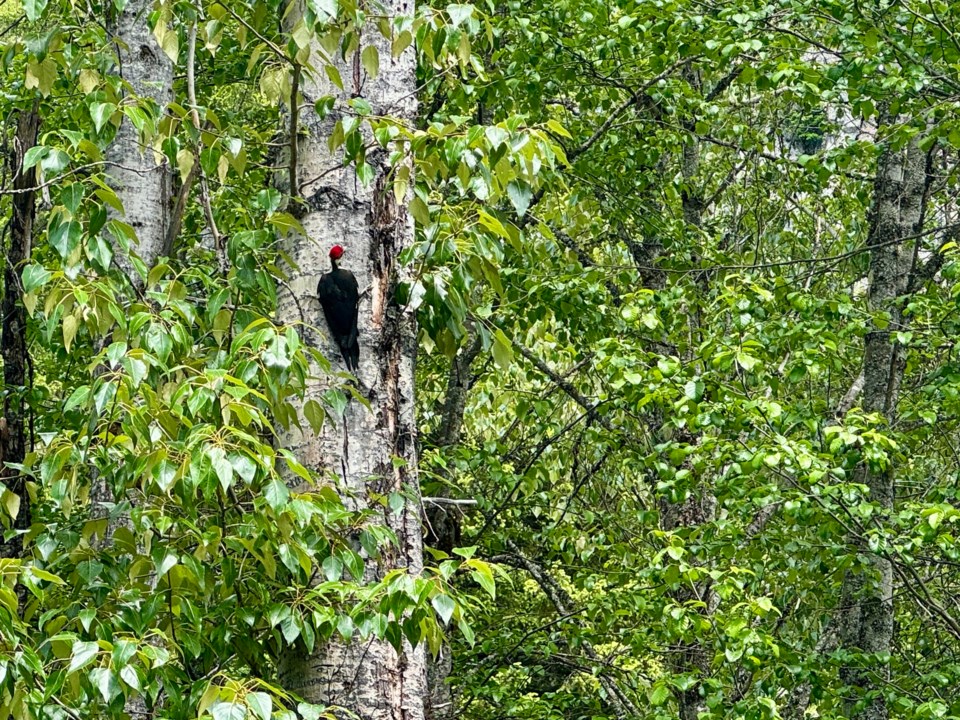Whistler's mayor and council advanced a pair of sweeping environmental bylaws on June 10 that will introduce stricter rules for tree removal and land disturbance across the resort community.
At its regular meeting, council gave first three readings to new environmental and tree protection bylaws, with 87 letters submitted in support and a wave of speakers appearing in council chambers to back the regulations.
The bylaws were introduced to address long-standing gaps in how Whistler protects its natural areas, following community concern over clear-cut lots, unregulated vegetation removal and heightened wildfire risk. In addition to creating a new permit process for tree removal, the rules prohibit land clearing in sensitive areas and carry steep penalties for infractions—up to $50,000 for unauthorized tree-cutting.
“This bylaw is more than just a policy,” said Rhonda Milliken, speaking on behalf of Pegah Pourkarimi, executive director of local environmental non-profit AWARE. “It’s a timely and necessary step to help Whistler safeguard its valley tree canopy, reduce wildfire risks and build long-term ecological resilience.”
Pourkarimi, who lives in Squamish, added the need for forward-thinking climate policy is increasingly personal. “As someone currently based in Squamish, where wildfires are an immediate and sobering reality, the need for forward-thinking measures like this hits close to home,” she said. “It’s a reminder that climate change isn’t just a distant threat—it’s here.”
The tree bylaw requires a permit to cut any tree larger than 15 centimetres in diameter within Whistler’s municipal boundaries, except for those within active development permits or deemed hazardous by a qualified arborist. The tree cutting permit application fees are $250 to cut up to 10 trees and $400 to cut more than 10 trees.
Violators who cut protected trees without permission face fines of $1,000 per tree, up to a maximum of $50,000, and must replace removed trees at their own cost.
The environmental bylaw, meanwhile, restricts land alteration in designated streamside and environmentally sensitive areas unless permitted by the municipality. It also formalizes requirements for erosion and sediment control during construction, reinforcing FireSmart best practices in at-risk zones.
Council first reviewed the bylaws at its May 27 committee of the whole meeting. During that session, environmental coordinator Tina Symko said the new rules aim to curb the “piecemeal loss of vegetation” observed on many privately owned lots in recent years.
“This bylaw is rooted in protecting ecological function and the character of our community,” she said at the time.
The initiative has garnered international attention from Whistler-lovers. Among the letters submitted, 86 were identical form submissions organized by AWARE, with signatories from across the Sea to Sky, Vancouver Island and the Lower Mainland.
The most impassioned letters and speeches, however, came from those who hail as far afield as the United Kingdom and Australia.
Pat Miller, writing from unceded Bundjalung Country in Australia, called tree protection a “key player” in Whistler’s economic model. He urged council to pass the bylaw “and give it teeth.”
“In world-heritage-listed rainforest areas in Australia, we have had instances where felling old-growth trees has had enormous detrimental effects on our environment,” Miller wrote. “It was done so an ostentatious house could improve its view, ignoring the knock-on effects that included landslip, catastrophic erosion and subsequent loss of amenity. Their resale value reflected the very poor decision.”
Kirsty Smyth, a member of AWARE’s advocacy committee who moved to Whistler from the U.K., told council she was drawn to the community by its “magical” forests.
“We could talk for a long time about all of the benefits of creating policy to protect trees,” she said. “They suppress carbon, they reduce noise pollution, they create better air quality [and] better soil health. But I really just wanted to use my three minutes to say that although I’m not from Whistler, I’m not Canadian, I really feel like the magic of this place is the trees.”
The bylaws will return for adoption at an upcoming meeting. Staff said education and enforcement efforts will ramp up over the summer, with resources provided to help homeowners and contractors understand the new permitting process.
Editor's Note, June 18, 2025: This story has been updated to correct the diameter of tree which requires a permit for cutting, the cost of the permit and to remove a sentence about exemptions for Indigenous cultural practices. Pique regrets these errors.




